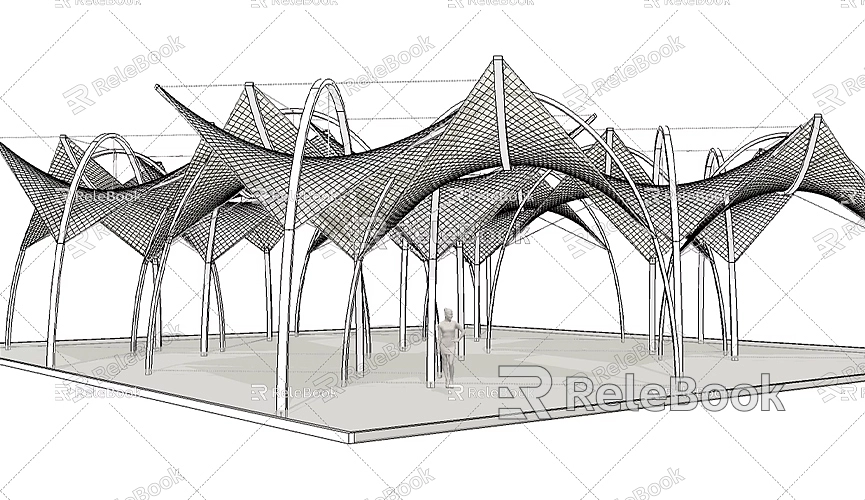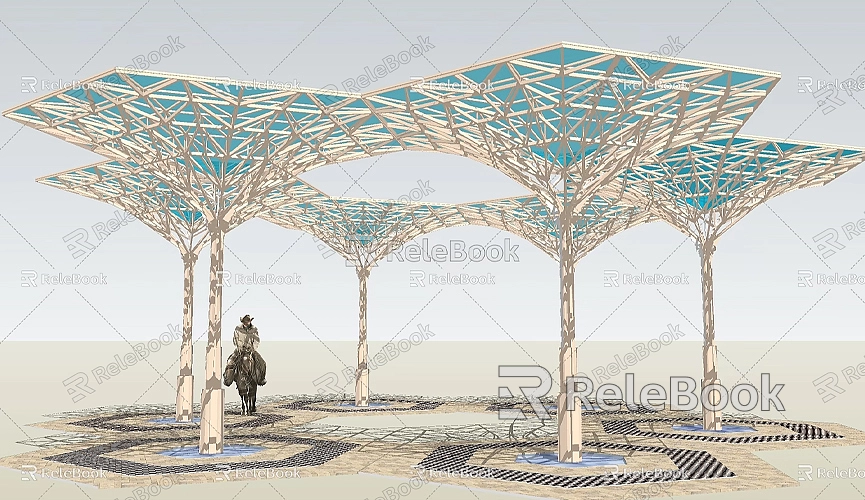How to Share SketchUp Models with Clients
In modern fields such as architecture, interior design, and landscape planning, SketchUp has become one of the most popular 3D modeling tools. With its simple, intuitive interface and powerful modeling capabilities, SketchUp is the go-to software for many designers and architects. However, the true value of a design often lies not just in the creation of the model, but in how effectively it is shared with clients. This enables clients to clearly understand the design details and creative ideas, and provide timely feedback. Effective communication between designers and clients becomes even more crucial in complex design projects.
To achieve this, designers need to master various effective sharing techniques and methods, utilizing modern technologies to seamlessly deliver SketchUp models to clients, enhancing communication efficiency and work quality. Whether through file transfers, cloud storage, or more specialized online platforms, designers have many options to showcase their work. In this article, we will explore how to use these tools and methods to share SketchUp models with clients, improving project interactivity and success rates.
Choosing the Right Sharing Method
When sharing SketchUp models with clients, the first thing designers must consider is selecting the appropriate sharing method. Different sharing methods are suitable for different scenarios and needs, and they can influence project progress and the client experience. Therefore, designers need to decide which method to use based on factors such as the client's needs, technical level, project complexity, and time budget. By making a smart choice, designers can ensure that models are delivered efficiently and accurately to clients, while also facilitating future revisions and feedback.

Sharing SketchUp Models via Cloud Storage
Cloud storage is one of the most commonly used file sharing methods today. Whether it’s Google Drive, Dropbox, or OneDrive, these platforms offer designers a convenient, reliable environment for uploading and sharing files. Designers can upload SketchUp model files directly to the cloud, then generate a shareable link to send to the client. The client can download the file or view it online with just the link. Cloud storage platforms not only provide simple file transfers but also feature version control and synchronization, ensuring that different versions of files aren’t easily lost during project progress.
The advantage of using cloud storage for sharing SketchUp models is that file transfer speeds are fast, and nearly all devices (including computers, smartphones, and tablets) can easily access them. This is particularly helpful when the client doesn't have SketchUp software installed. The cloud platform allows them to easily access and view the design. By uploading model files directly to the cloud, designers can avoid complicated transfer processes, save significant time, and increase project management flexibility.
Additionally, some cloud platforms like Google Drive and Dropbox also offer online preview features, allowing clients to view SketchUp models directly without downloading them. This preview functionality supports certain levels of interactivity, enabling clients to rotate and zoom in on the model, providing a more intuitive understanding of the layout and design. For clients who need to quickly grasp the design’s effect, this is a highly efficient and convenient method.
Using SketchUp Viewer for Interactive Presentations
SketchUp Viewer is a free tool specifically designed for sharing models with clients. SketchUp Viewer is available for desktop and mobile platforms, supporting various operating systems such as Windows, Mac, Android, and iOS. By uploading models to SketchUp’s cloud platform or exporting them to a shareable format, designers can send clients a file through SketchUp Viewer. Clients can use SketchUp Viewer to interact with the model, view its details, and offer modification suggestions.
A major advantage of using SketchUp Viewer is its ability to support more complex model displays. Clients can directly experience the 3D effects of the model in the software. For example, they can take virtual tours of the space, view the model from different perspectives, and even add comments or notes within the model. This enables more direct and efficient communication between designers and clients, ensuring that the design is accurately understood and feedback is received in a timely manner.
Moreover, SketchUp Viewer also supports viewing models on mobile devices and VR headsets, offering clients even more flexibility and convenience, especially as virtual reality experiences are becoming more widely used in architecture design. For clients who need to view multiple perspectives or make several design adjustments, SketchUp Viewer is undoubtedly an ideal tool.
Using Trimble Connect for Collaboration and Sharing
Trimble Connect is a collaboration platform designed specifically for the architecture and design industries, supporting file uploads and sharing from multiple 3D modeling tools, including SketchUp. Unlike traditional file-sharing platforms, Trimble Connect offers robust collaboration features, allowing multiple participants to engage in discussions and modifications of the design simultaneously.

Designers can upload their SketchUp files to the Trimble Connect platform and share the access link with clients or other relevant personnel. On the platform, clients can not only view and download models, but they can also use built-in collaboration tools to provide real-time feedback, suggestions, and questions. For example, clients can directly add comments and mark areas for modification on the model, allowing designers to adjust the design based on the feedback. This real-time interaction makes design communication more convenient and transparent, while making the design process more efficient.
Another advantage of Trimble Connect is that it supports multi-device use, enabling clients to access and view models on smartphones, tablets, or computers from anywhere. This is particularly user-friendly for clients who don't frequently use SketchUp software, as it doesn’t require additional tools to be installed—all operations can be done directly in the browser.
Enhancing Client Experience through 3D Presentation and Visualization Platforms
Sometimes, simply providing static SketchUp model files or renderings doesn't fully meet the client's need to understand the design effect, especially in high-end or complex projects where clients require a more intuitive and immersive experience to fully grasp the design. In such cases, designers can leverage 3D presentation and visualization platforms.
Platforms like Enscape and Lumion can convert SketchUp models into high-quality 3D renderings or animations. These rendering tools allow designers to present more realistic and detailed design effects, such as lighting changes, material details, and landscape environments. Clients can get a more intuitive feel for the design, better understand the spatial layout, and even take virtual tours of the design.
In addition to high-quality static images and animations, many 3D presentation platforms support VR (virtual reality) functionality, enabling clients to enter the virtual space of the design and have a more immersive, interactive experience. This presentation method undoubtedly enhances the client’s perception and understanding of the design, especially for clients with high demands or those requiring detailed reviews.
File Formats and Compatibility Issues
When sharing SketchUp models with clients, designers must consider file formats and compatibility. SketchUp's default file format is .skp, but not all clients may have SketchUp software installed. Therefore, before sharing the model, designers may want to export the file into more universal formats, such as .obj, .fbx, or .3ds, which are supported by many other design software or platforms. If the client cannot directly open the .skp file, these exported formats will provide greater compatibility.
Additionally, designers can consider exporting SketchUp models as rendered images (JPEG, PNG, etc.) or video files, which can be shared directly via email or cloud storage. This method is perfect for clients who are mainly concerned with the appearance of the design and do not need interactive features. By providing high-quality renderings, designers can showcase the most refined aspects of the design, enabling clients to make quick judgments.
Using High-Quality 3D Resources
During the creation of SketchUp models, using high-quality textures, materials, and 3D model resources can significantly enhance the design, making the model more realistic. Relebook is a platform that provides a large collection of high-quality 3D textures, HDRI images, and 3D models, which are essential for designers.
If you need high-quality 3D textures and HDRI images when creating your models and virtual scenes, you can download them for free at Relebook Textures. These textures and HDRI images can help improve the model's visual quality, making it appear more realistic.
Additionally, if you need beautiful 3D models, you can download them from Relebook 3D Models. Relebook offers a wide variety of top-quality 3D resources, helping you improve your design quality and efficiency. With these resources, designers can easily complete their designs and ensure they present the perfect effect to clients.
When sharing SketchUp models with clients, designers need to select the most suitable method based on the specific project requirements and the client's technical level. Whether using cloud storage, SketchUp Viewer, Trimble Connect, or high-quality 3D presentation platforms, choosing the right tools and methods can help designers communicate more effectively with clients, improve the presentation quality, and facilitate smoother project progress.
By utilizing high-quality 3D textures, HDRI images, and beautiful 3D models, designers can present more realistic and detailed design effects. Using the premium resources available on the Relebook platform can significantly elevate the quality of design work, ensuring that the final design meets the client's needs and expectations.
In conclusion, efficient sharing and presentation of SketchUp models not only enhance communication between designers and clients but also improve the overall quality of the project and client satisfaction.

